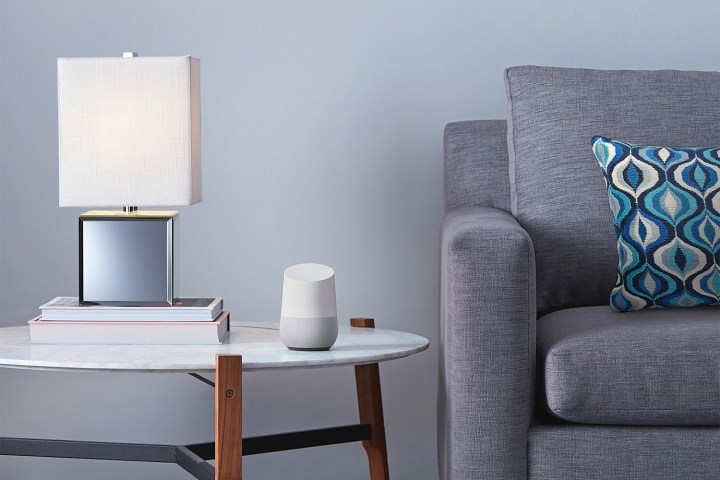Last year, Google Home updated its voice command system with a fun bonus: You could give the Home two commands in one sentence, and it would execute both of them at once. This was handy if you had a couple different smart devices to control at the same time or wanted to compare two different bits of information.
Now the latest update to Home allows you to give three different commands at once, thanks to something called the Multiple Actions feature. This both increases the number of commands you can give and makes the process of interacting with your voice assistant smoother. But how do you give three commands to Google Home without confusing it? The secret is all in the phrasing, and we’ll show you how to do it.
Note: If it’s been a while since you’ve turned on and updated your Google Home, you should do this first. Google Homes are set to update automatically when they are turned on (you can tell by the spinning white LED light). This process generally takes 10 to 15 minutes.
Step 1: Know the commands you want to give

Think about the devices and queries you use with Google Home. It’s important to understand exactly what you want to do, and the right voice commands to do it—otherwise the multiple commands feature will not function.
Fortunately, Google’s support pages have a long list of potential voice commands for Google Home, divided by category. Check out the list, pick a few things that you would like to do, and make sure that you know the precise voice commands to get Home to cooperate. We suggest jotting down a few of the commands you know you’ll use and leaving them by Google Home as a reference until you have them memorized.
Step 2: Test it out by combining commands

It’s time to head back to grammar school and make some simple sentences! Pick three devices, pieces of information, or other commands that you want Google Home to activate all at once. Then simply start with “Hey Google” or “OK, Google,” and give the command as a list. We’re going to give you several different examples to show how it works, so you can use this capability effectively.
“Hey Google, what time is it in Tokyo, New York, and London?” This isn’t just useful for trivia—it also allows you check different cities to see what specific time zones they are in, which can be useful when planning a trip or a business communication.
“Hey Google, what’s the weather in Sacramento, San Diego, and Los Angeles?” This sort of query is especially useful before take long trips or flights, so you can see what weather to expect in various destinations.
“Hey Google, turn on the coffeemaker, the kitchen light, and the Chromecast.” The three-step command can also be useful when directing various smart devices around your home (as long as they are connected to Google Home). Use this option to control multiple devices in short order.
“Hey Google, turn off the dining room light, turn on the living room lights, and play music by The Strokes.” Here’s an example of more inter-related smart device commands. This is basically a routine that you can make up on the fly: It’s useful if you don’t like programming routines, or if you want to test a routine out to see if it’s really worth teaching to Google Home.
“Hey Google, what’s my first meeting today, what’s my calendar for tomorrow, and list all events for July 20th.” You can see how this would be useful if you aren’t near a computer to check your calendar. The Home can provide a list of your events, so you can see when you have free time and if you need to reschedule a particular event.
Step 3: Know the limits

There are some limitations to this feature. If Google needs to ask for more information, then it won’t be able to complete the three-part command. For example, if you say, “Hey Google, set an alarm and turn on the porch lights and security alarm,” then Google will ignore everything else and ask you what time you want to set the alarm for.
Sometimes you can fix this by giving that information in your command, such as, “Hey Google, set an alarm for 6:30 a.m. tomorrow.” However, other commands may just be too complex.
Currently, the three-command ability is primarily available in English-speaking countries, although Google is working on rolling the feature out into other languages and regions soon.



